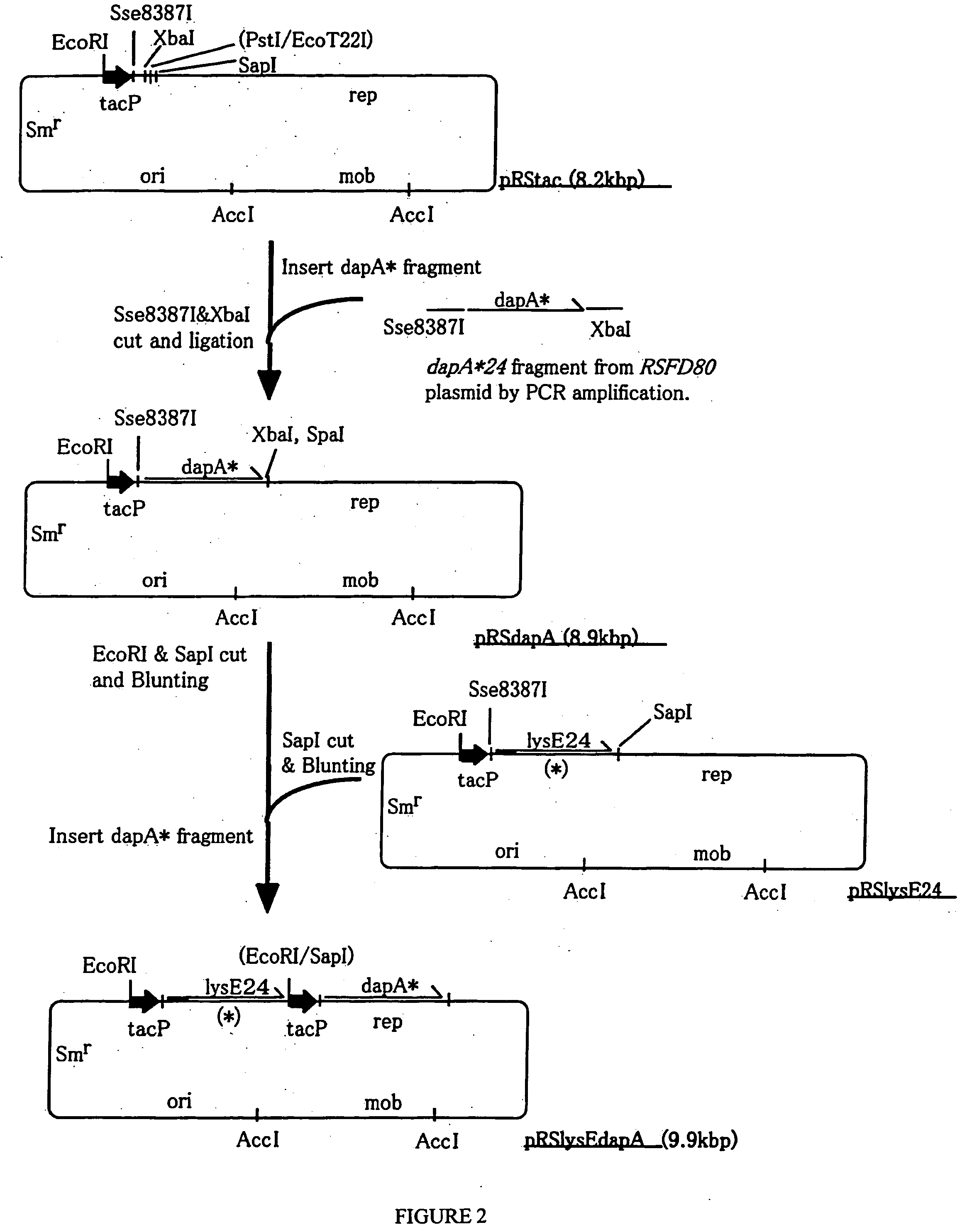Method for producing L-amino acid using methylotroph
a technology of methylotroph and lamino acid, which is applied in the direction of organic chemistry, instruments, lyases, etc., can solve the problems that the corresponding enzymes cannot be introduced into the cells of the target methanol-utilizing bacteria, and it is difficult to clearly express this condition by numerical values
- Summary
- Abstract
- Description
- Claims
- Application Information
AI Technical Summary
Benefits of technology
Problems solved by technology
Method used
Image
Examples
example 1
[0083] Cloning of Genes of Enzymes Constituting Entner-Doudoroff Pathway
[0084] The edd and eda gene, which code for enzymes EDD and EDA, respectively, a part of the Entner-Doudoroff pathway, have been cloned from Escherichia coli, Zymomonas mobilis and so forth. Since it is known that Escherichia coli genes can be expressed in the Methylophilus methylotrophus AS1 strain, it was decided to clone the edd and eda gene from Escherichia coli, and express them in a Methylophilus bacterium.
[0085] (1) Construction of Plasmid pMW-EDDA
[0086] edd and eda form an operon in Escherichia coli (J. Bacteriol, 174 (14): 4638-46, July 1992), and it is possible to obtain using known techniques. Accordingly, edd-F (SEQ ID NO: 11) and eda-R (SEQ ID NO: 12) were designed as primers that would simultaneously amplify both the eda and edd genes when amplifying a DNA fragment which includes both genes by PCR using chromosomal DNA of the E. coli W3110 strain as a template. PCR was performed by using Pyrobest ...
PUM
| Property | Measurement | Unit |
|---|---|---|
| Fraction | aaaaa | aaaaa |
| Density | aaaaa | aaaaa |
| Density | aaaaa | aaaaa |
Abstract
Description
Claims
Application Information
 Login to View More
Login to View More - R&D
- Intellectual Property
- Life Sciences
- Materials
- Tech Scout
- Unparalleled Data Quality
- Higher Quality Content
- 60% Fewer Hallucinations
Browse by: Latest US Patents, China's latest patents, Technical Efficacy Thesaurus, Application Domain, Technology Topic, Popular Technical Reports.
© 2025 PatSnap. All rights reserved.Legal|Privacy policy|Modern Slavery Act Transparency Statement|Sitemap|About US| Contact US: help@patsnap.com


